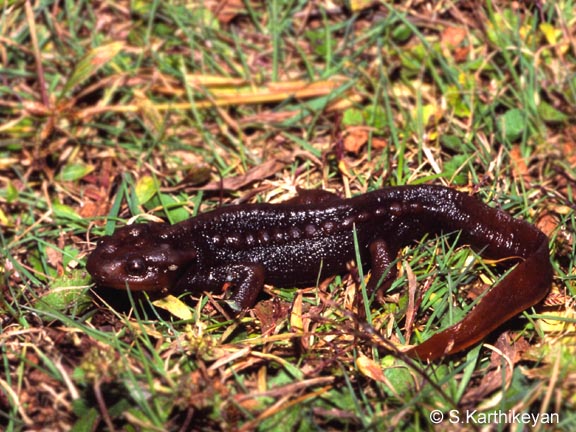Newts and salamanders are largely inhabitants of the temperate regions with a few exceptions. There are about 350 species of newts and salamanders in the world. At first sight newts and salamanders (tailed amphibian) can be mistaken for a lizard (a reptile).
The Himalayan Newt Tylototriton verrucosus is a very special creature since it is the only tailed amphibian that is known from India. Within India it is known to occur in the eastern Himalaya. It has been recorded from Darjeeling, Sikkim, Meghalaya, Manipur and Arunachal Pradesh.

They frequent pools, ponds, and paddy fields. The sideways movement of their flat tail propels them forward and helps them swim well. Insects and other aquatic organisms are their main food. Being nocturnal and secretive not much is known about these creatures. During the winter months they are known to hide in burrows and other suitable places. They emerge from their hiding places during the monsoon months to breed and are most active during this time.
Habitat destruction is a threat to this uncommon species. Climate change could also threaten this species.